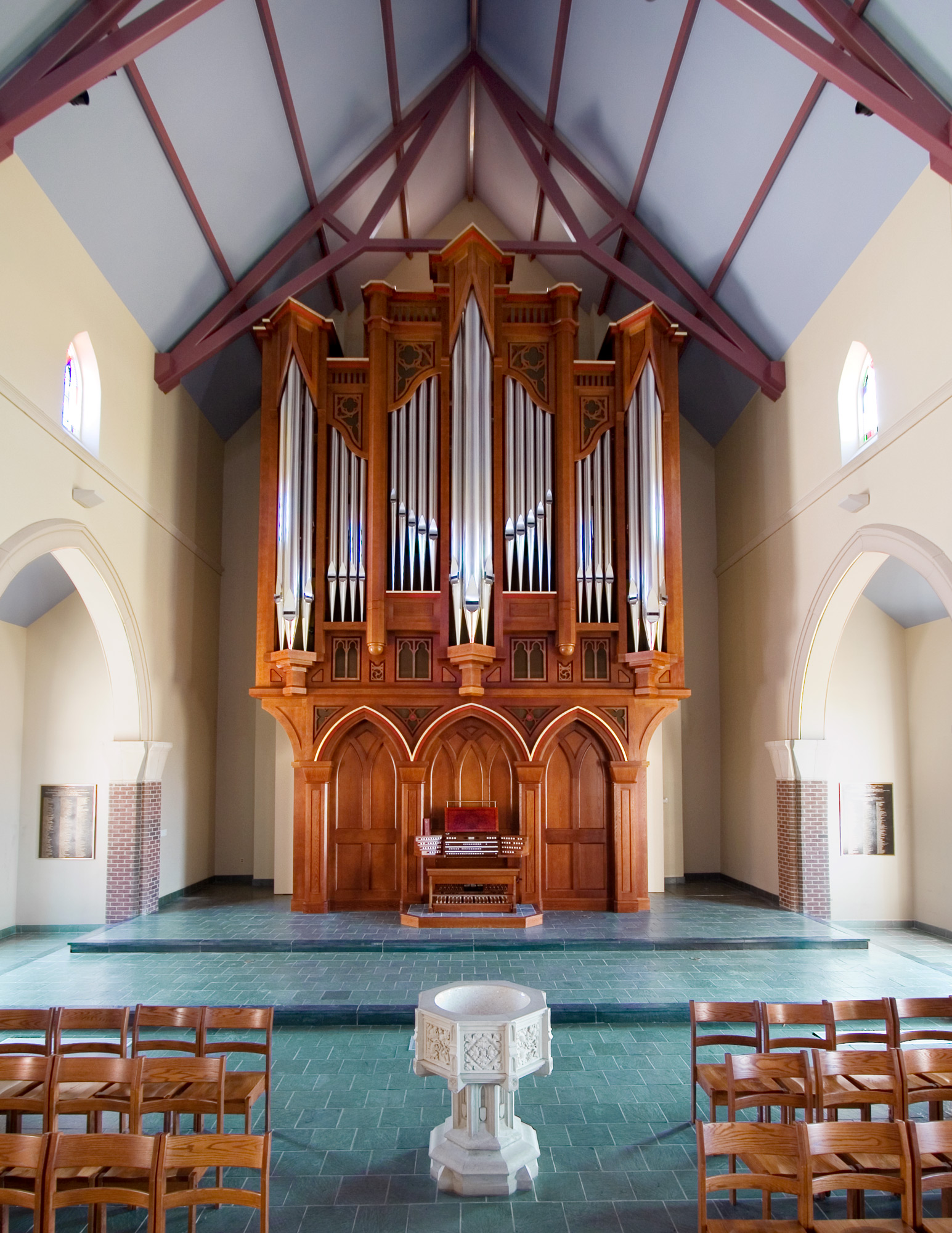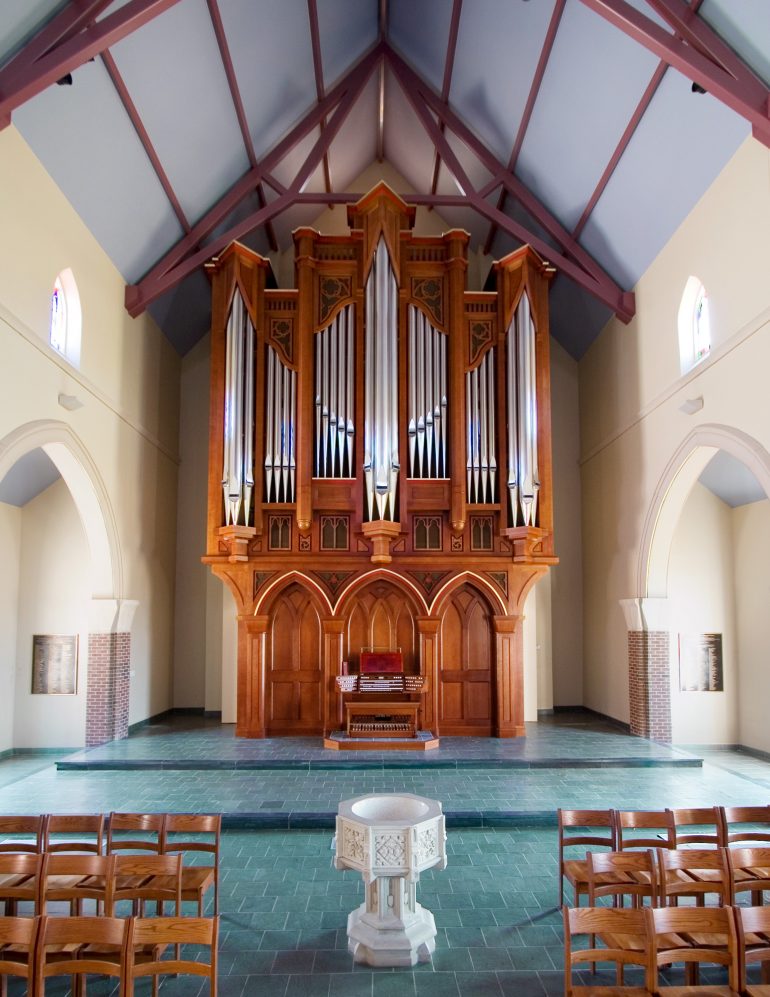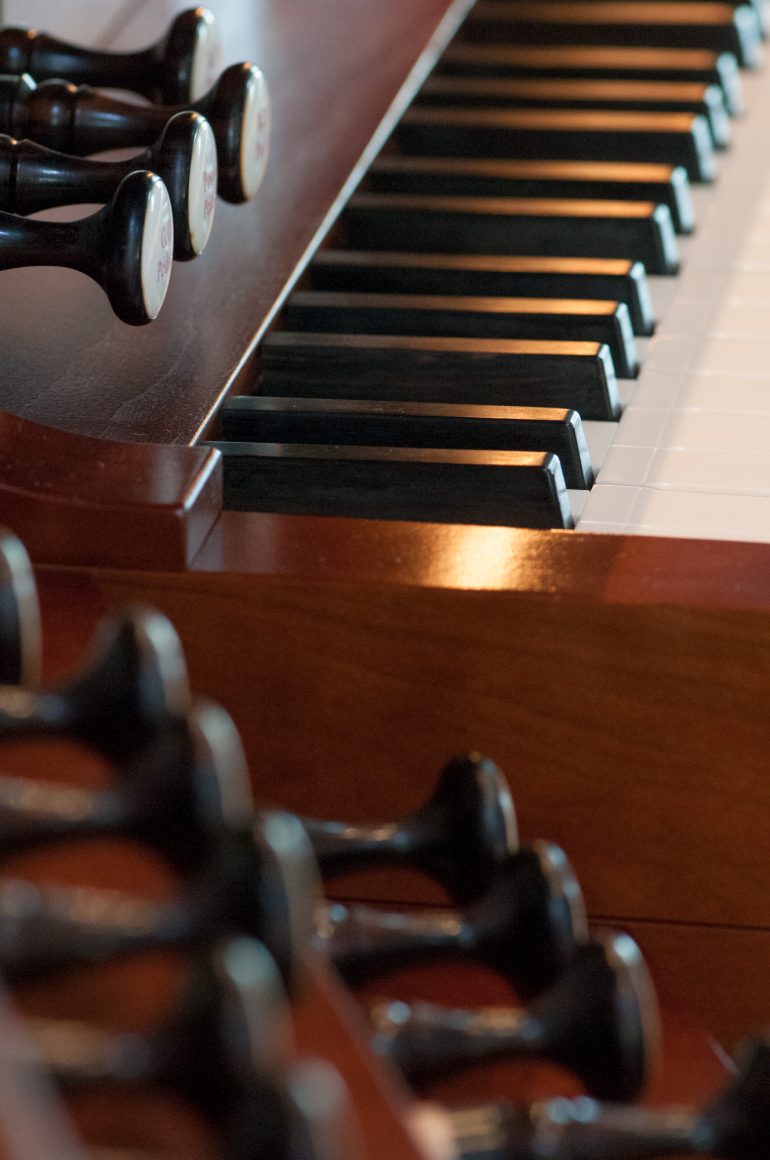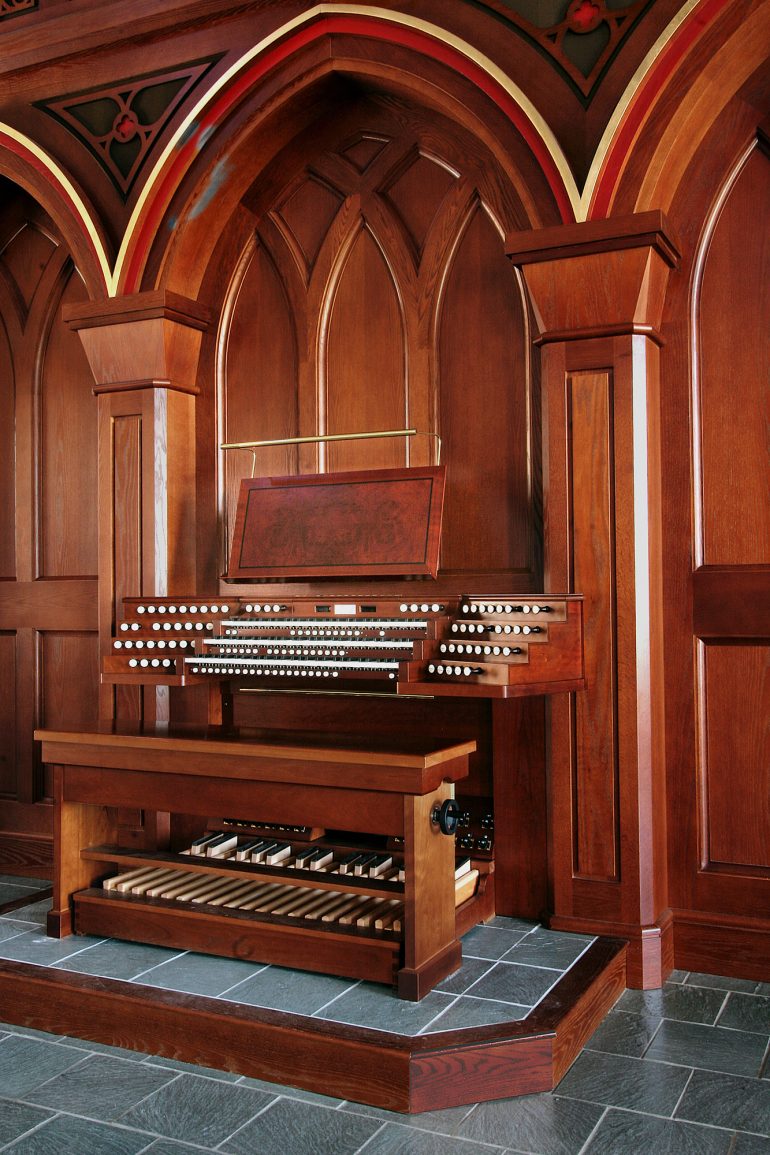
- phone: 978.283.1909
- email: cbfisk@cbfisk.com
Opus 126
St. Paul’s Episcopal Church
Greenville, NC
Ranks: 58Independent Voices: 45
Pipes: 3180
Created: 2005
Opus 126 represents the work of a non-profit foundation that united three groups, St. Paul’s Church, East Carolina University, and the Greenville, North Carolina, philanthropic community. Together they funded an organ that is the cornerstone of a common mission: educating future organists and church musicians, and inspiring congregants and audiences for generations to come.
In consultation with Janette Fishell, then Director of Music at St. Paul’s and Professor of Organ at ECU, the organ’s tonal design is strongly influenced by the French Romantic School. Pipe design and materials, as well as voicing techniques, follow closely in the tradition of Aristide Cavaillé-Coll’s late work. The stop list is the result of careful research and thoughtful discussion of the musical requirements of the Episcopal liturgy, including both leadership and accompaniment. The splendid acoustics of St. Paul’s, designed by Dana Kirkegaard of Kirkegaard Acoustics, Inc., gave us the aural environment in which to create an organ with the breadth and flexibility needed to serve as a university teaching organ and recital instrument.
The organ is the centerpiece of the recently established Fisk Academy for new and emerging organists. The Academy also provides teaching and performance residencies for world-class organists and pedagogues, and sponsors a Pre-College Organ Competition open to students throughout the southeastern United States.

Grand Orgue, Manual I
Montre 16’ en façade
Montre 8’
Salicional 8’
Flûte conique 8’
Flûte harmonique 8’
Prestant 4’
Flûte ouverte 4’
Quinte 2 2/3’
Doublette 2’
Tierce 1 3/5’
Plein jeu harmonique II-VI
Plein jeu VI
Bombarde 16’
Trompette 8’
Trommeten 8’
Clairon 4’
Positif expressif, Manual II
Principal 8’
Cor de Nuit 8’
Prestant 4’
Flûte douce 4’
Nasard 2 2/3’
Doublette 2’
Tierce 1 3/5’
Plein jeu IV
Cromorne 8’
Tuba Mirabilis 8’
Récit expressif, Manual III
Bourdon 16′
Viole de gambe 8’
Voix céleste 8’
Flûte traversière 8’
Bourdon 8’
Flûte octaviante 4’
Octavin 2’
Plein jeu IV-V
Cornet III (G0-d3)
Basson 16’
Trompette 8’
Hautbois 8’
Voix humaine 8’ (2015)
Clairon 4’
Pédale
Bourdon 32’ (ext.)
Contrebasse 16’
Montre 16’ (from G. O.)
Bourdon 16′ (from Récit)
Octave 8’
Salicional 8′ (from G. O.)
Flûte conique 8’ (from G. O.)
Octave 4’
Contre Bombarde 32’ (ext.)
Bombarde 16’ (from G. O.)
Posaune 16’
Trompette 8’ (from G. O.)
Trommeten 8’ (from G. O.)
Clairon 4’ (from G. O.)
Couplers:
Positif expressif to Grand Orgue
Récit expressif to Grand Orgue
Récit expressif to Positif expressif
Octaves graves
Grand Orgue to Pédale
Récit expressif to Pédale
Récit expressif to Pédale 4’
Accessories:
Tremulant Grand Orgue and Positif expressif
Vent flexible
Balanced Positif expressif and Récit expressif Pedals
Tremulant Récit expressif
Cymbelstern
Kowalyshyn Servopneumatic Lever: This provides a pneumatic assist (similar to a Barker Machine, but more refined) to the Grande Orgue key action. It also allows the addition of the “Octaves graves” coupler to the organ. This coupler couples the servopneumatic lever to itself one octave lower. Therefore it couples the Grand Orgue to itself at sub-octaves and any division coupled to the Grand Orgue also appears on the Grand Orgue at sub-octaves.
Keydesk: Attached to case, three manuals and pedal; manuals 61 keys CC – c4, naturals of bone, sharps of ebony; Fisk pedalboard 32 keys CC – g1


